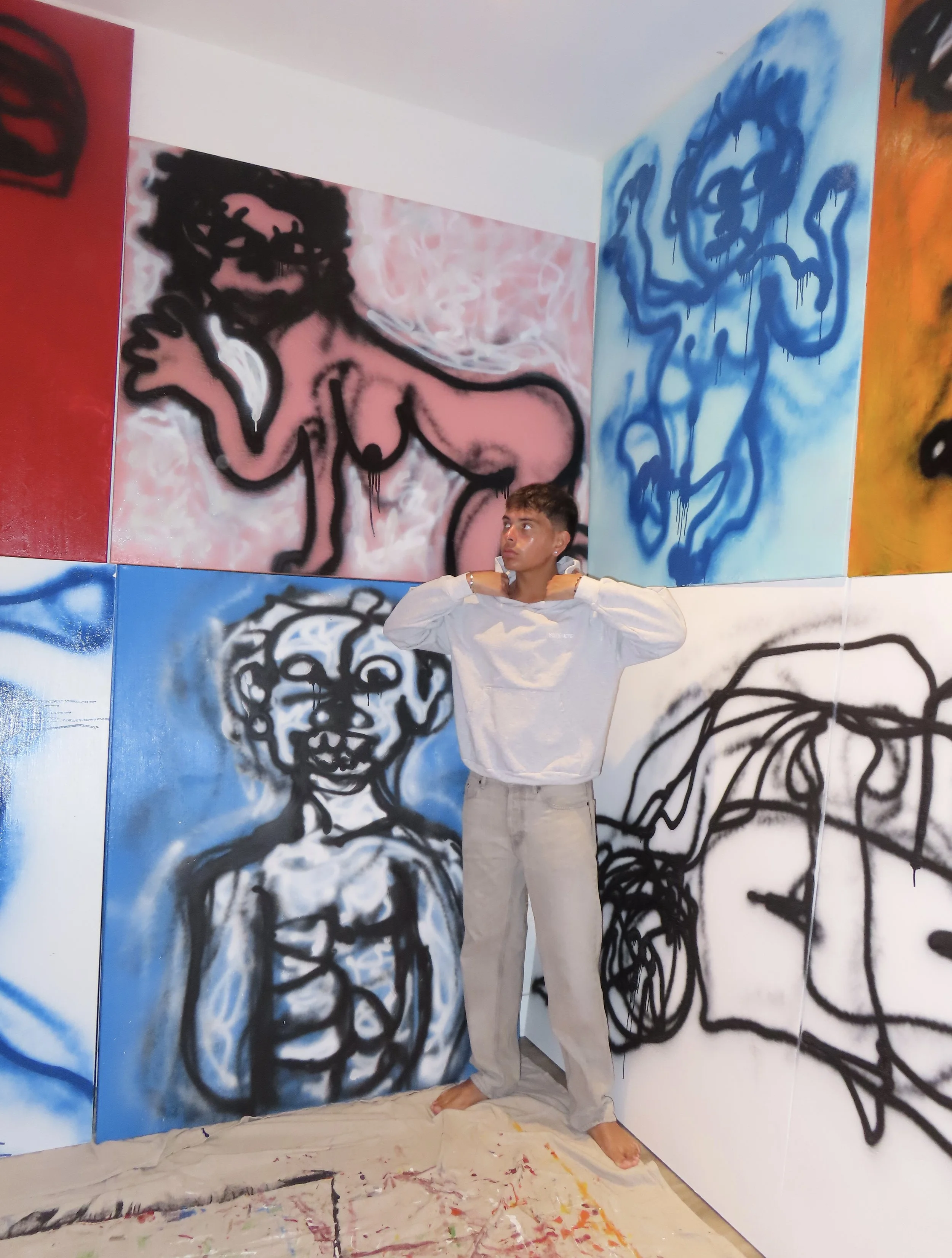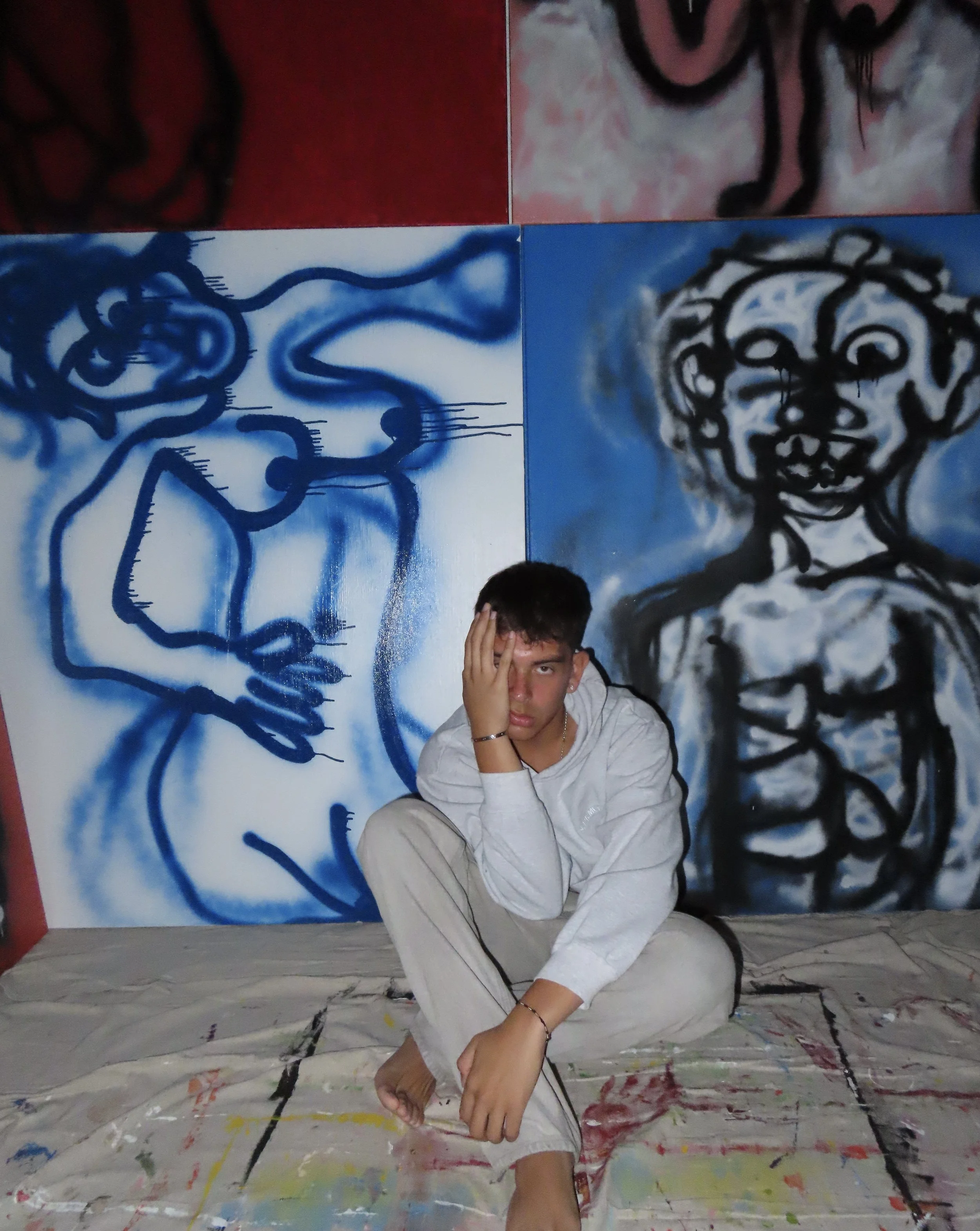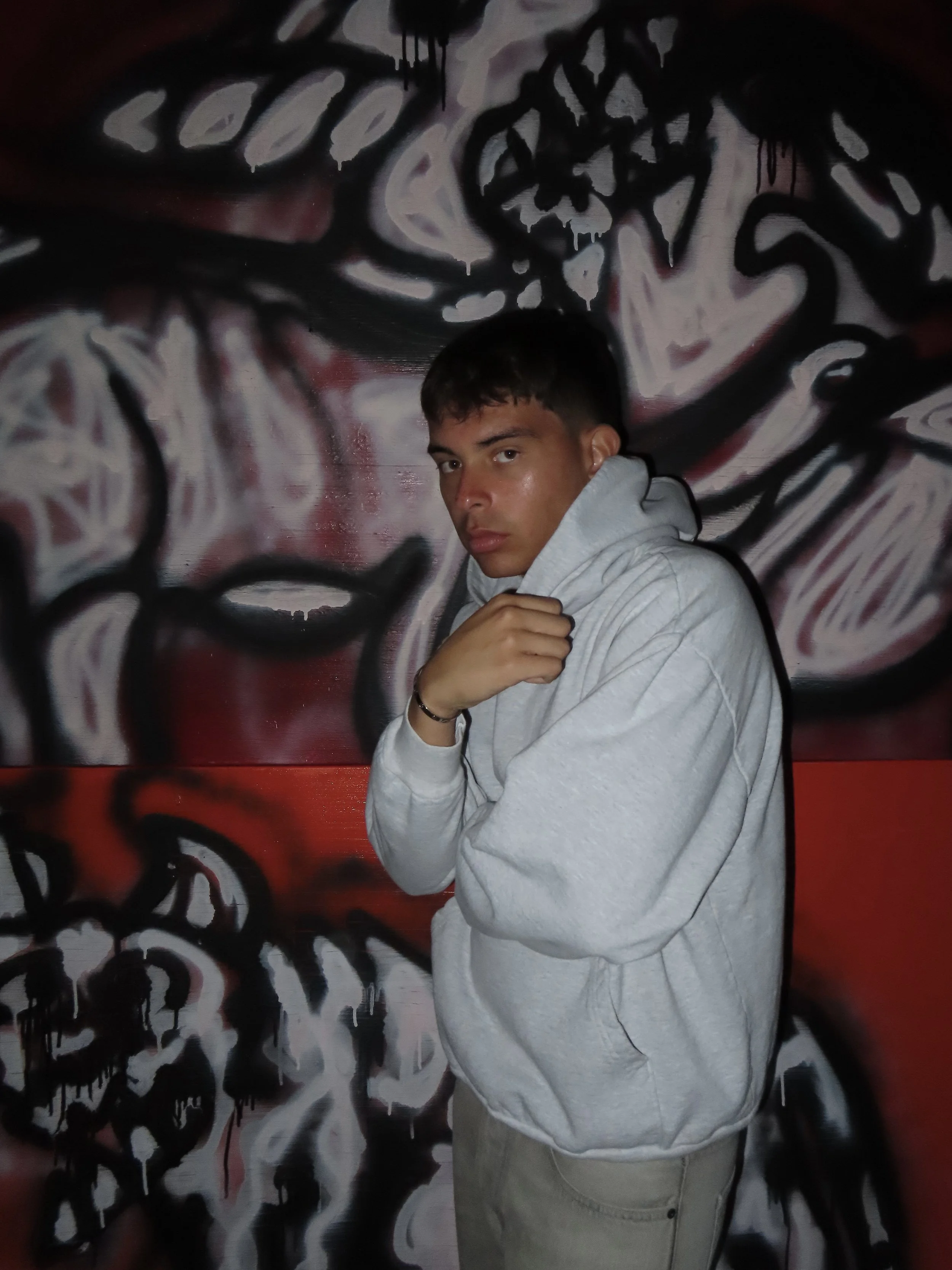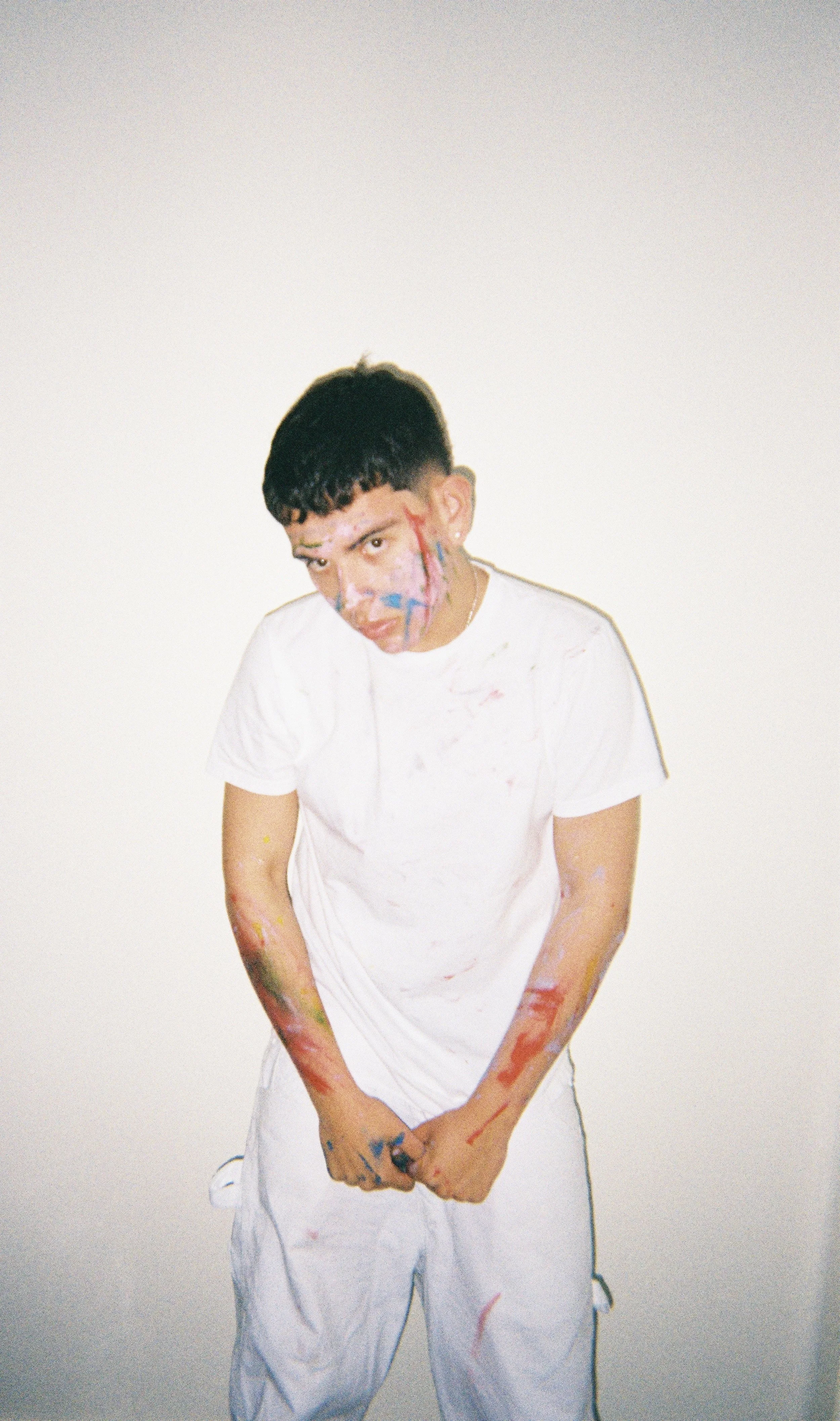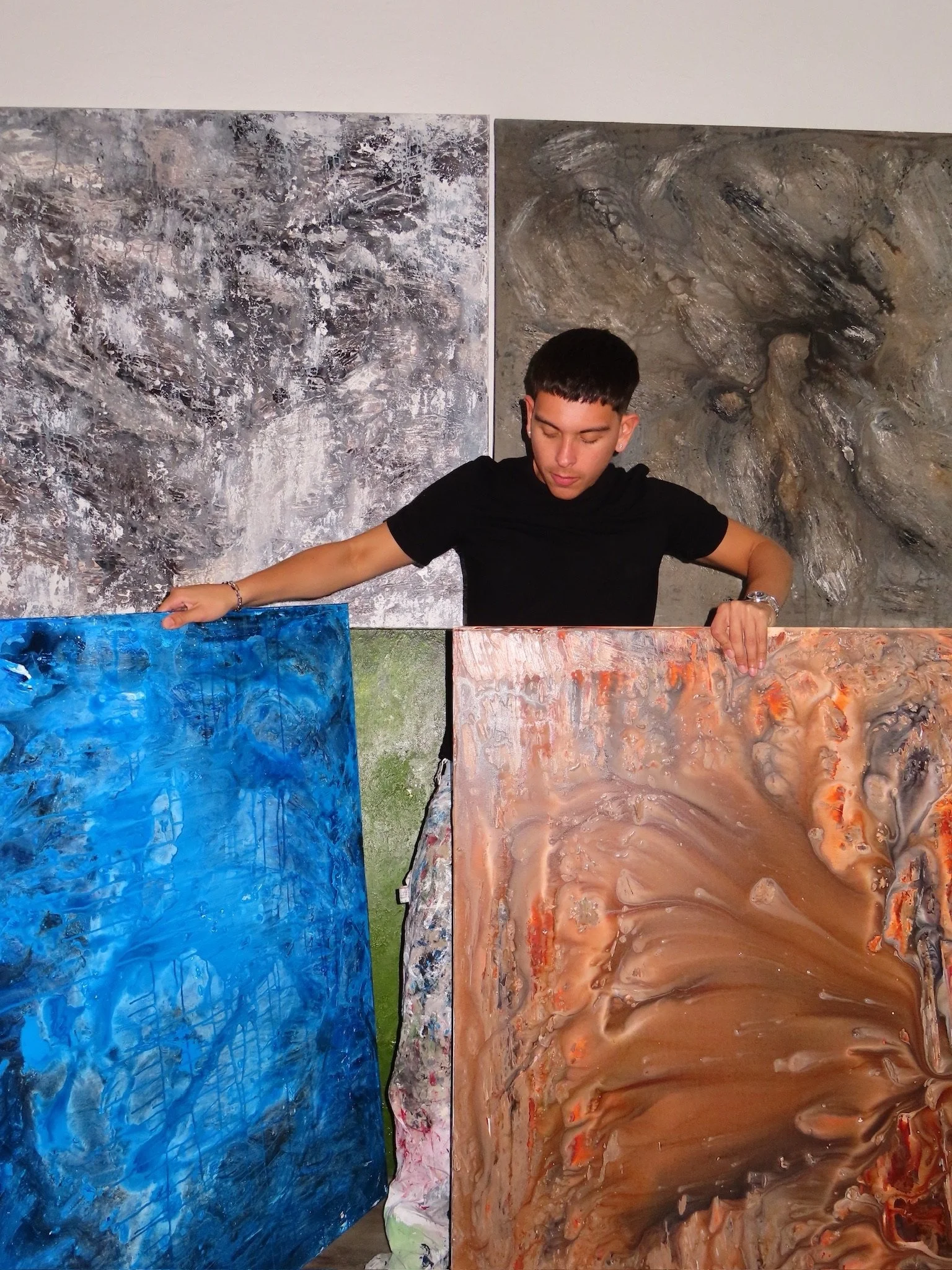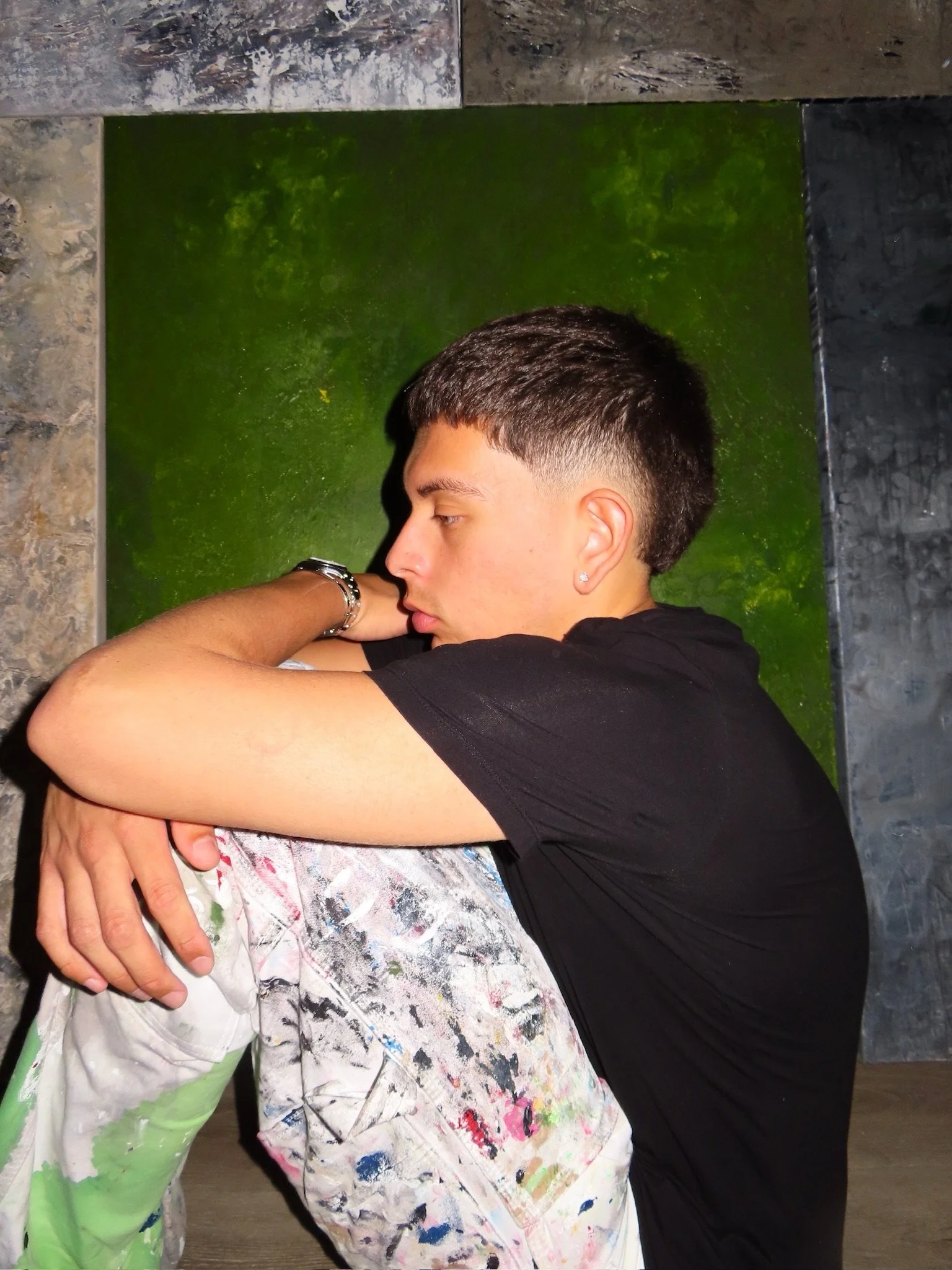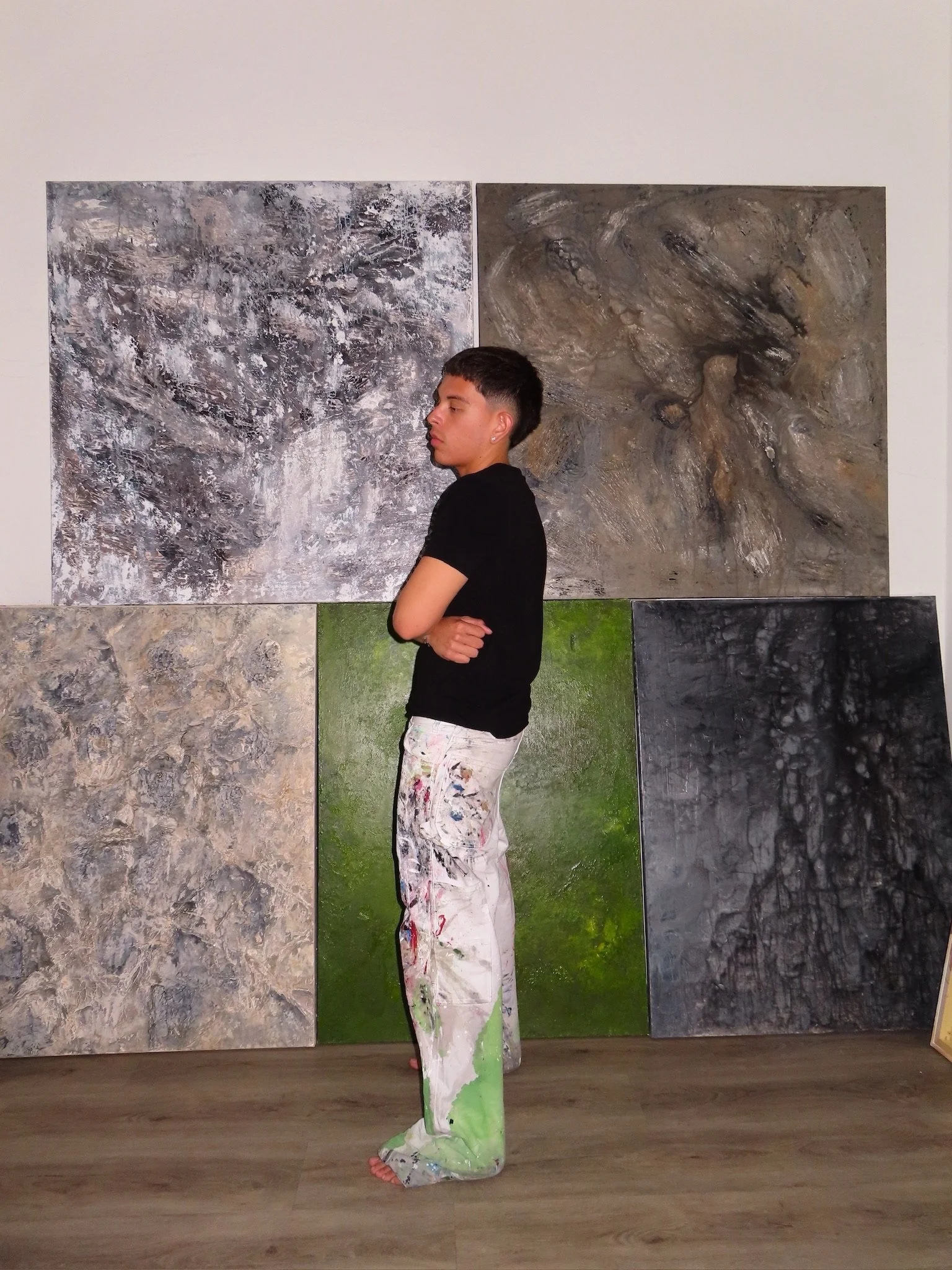Biography
Biography
Deemed “The Picasso of Gen Z,” by Univision’s Despierta América, Juan Salcedo, known professionally as Salcedo, is a twenty year-old multi-faceted artist, whose talents span diverse creative mediums, such as visual art, fashion design, and poetry. His works aim to reflect the boundless creativity and refracted perspectives of society's youth. His goal is not to attain so-called "perfection," or to work inside of the established notion of aesthetics. Instead, it is to demonstrate how he sees world, encapsulating all of the beauty and wretchedness within it.
“Outcast” is a term far too familiar to Salcedo. Growing up as an only child, of Colombian descent, inherently came with many differences to what everyone else seemed to be living throughout his childhood. Imposed limitations and hindered experiences served the same purpose cocoons seem to do for caterpillars. The struggle and desire to escape has crafted the beauty that is the diverse perspectives and ambiguity Salcedo portrays within his artistry. Years of observation, analysis, and day-dreaming, of unknown experiences were the key to enabling his unique vision and ability to create. He is the epitome of strategic risk-taking and self belief.
Salcedo is characterized by what seems to be an innate fire and sense of rebellion that can be seen by many, through his passion and dedication towards his career as an artist. Confidence and integrity are sometimes misinterpreted as arrogance and egotism, but they are the keys to his success. Completely self-taught, and fully immersed within his “autodidact life,” he has attracted the attention of names like Lil Yachty and Olaolu Slawn, amongst an abundance of celebrity names and art collectors across the world, including companies like Puma and Shoe Palace, who have sought out exclusive commissions from the artist. At his young age, he has worked alongside galleries such as Aura Copeland Gallery, Colour Senses Project, and White’s Art Gallery, as well as garnered recognition from prestigious media outlets such as, Art E$tate Magazine, El Tiempo, W radio, and El Espectador. His work has also crossed the barriers of his preferred medium and been shown on the textiles of pieces by womenswear designer Yas Gonzalez during Miami Fashion Week.
The concept of failure is nonexistent in his mind. In his own words, “you can’t fear outcomes you don’t accept as possibilities—and me personally, I don’t give a f**k to risk my entire existence on success. I rather die trying to live than live wondering what it’s like to die without doing so.” The artist is currently based out of Miami where he continues to produce innovative work that consistently drives him up to be amongst today’s top emerging artists.
To enhance realism, artists developed techniques to create spatial illusions. For instance, Giotto employed chiaroscuro, which was the use of light and shadow, to give his figures volume and a lifelike quality. He also showed early attempts at perspective, such as overlapping figures and architectural depth, to craft more believable scenes. These artistic developments align with the rise of humanism, which is a philosophy that highlighted the significance of human beings, their emotions, and experiences. Artists began to depict figures with unique personalities and realistic gestures, placing them in familiar, natural settings. This human-centered approach transformed the relationship between art and its audience, making it more relatable and reflective of everyday life. Overall, this period signifies a pivotal moment where art began to embrace Renaissance ideals of realism, individuality, and intellectual depth.
To enhance realism, artists developed techniques to create spatial illusions. For instance, Giotto employed chiaroscuro, which was the use of light and shadow, to give his figures volume and a lifelike quality. He also showed early attempts at perspective, such as overlapping figures and architectural depth, to craft more believable scenes. These artistic developments align with the rise of humanism, which is a philosophy that highlighted the significance of human beings, their emotions, and experiences. Artists began to depict figures with unique personalities and realistic gestures, placing them in familiar, natural settings. This human-centered approach transformed the relationship between art and its audience, making it more relatable and reflective of everyday life. Overall, this period signifies a pivotal moment where art began to embrace Renaissance ideals of realism, individuality, and intellectual depth.
The classroom is a wonderful, yet artificial, place: your professor gets paid to pay attention to your ideas, and your classmates are paying to pay attention to your ideas. Never again in your life will you have such a captive audience. Unless, that is, you create one yourself.
The classroom is a wonderful, yet artificial, place: your professor gets paid to pay attention to your ideas, and your classmates are paying to pay attention to your ideas. Never again in your life will you have such a captive audience. Unless, that is, you create one yourself.
If you have one person you’re influenced by, everyone will say you’re the next whoever. But if you rip off a hundred people, everyone will say you’re so original.
If you have one person you’re influenced by, everyone will say you’re the next whoever. But if you rip off a hundred people, everyone will say you’re so original.
It is our failure to become our perceived ideal that ultimately defines us and makes us unique.
It is our failure to become our perceived ideal that ultimately defines us and makes us unique.
Art can't be irresponsible. It speaks to all aspects of the human experience. There are sides of ourselves that aren't welcome in polite society, thoughts and feelings too dark to share. When we recognize them expressed in art, we feel less alone. More real, more human.This is the therapeutic power of making and consuming art.
Art can't be irresponsible. It speaks to all aspects of the human experience. There are sides of ourselves that aren't welcome in polite society, thoughts and feelings too dark to share. When we recognize them expressed in art, we feel less alone. More real, more human.This is the therapeutic power of making and consuming art.
The goal is to turn off the conscious mind and follow our impulses. Children are exceptionally good at this. They may move through several different spontaneous expressions of emotion in a single minute, without judgment or attachment. As we grow older, we're taught to hide or bury these reactions. This mutes our inner sensitivity. If we were to learn anything, it would be to free ourselves from any beliefs or baggage or dogma that gets in the way of us acting according to our true nature. The closer we get to a childlike state of free self-expression, the purer our test and the better our art.
The goal is to turn off the conscious mind and follow our impulses. Children are exceptionally good at this. They may move through several different spontaneous expressions of emotion in a single minute, without judgment or attachment. As we grow older, we're taught to hide or bury these reactions. This mutes our inner sensitivity. If we were to learn anything, it would be to free ourselves from any beliefs or baggage or dogma that gets in the way of us acting according to our true nature. The closer we get to a childlike state of free self-expression, the purer our test and the better our art.

